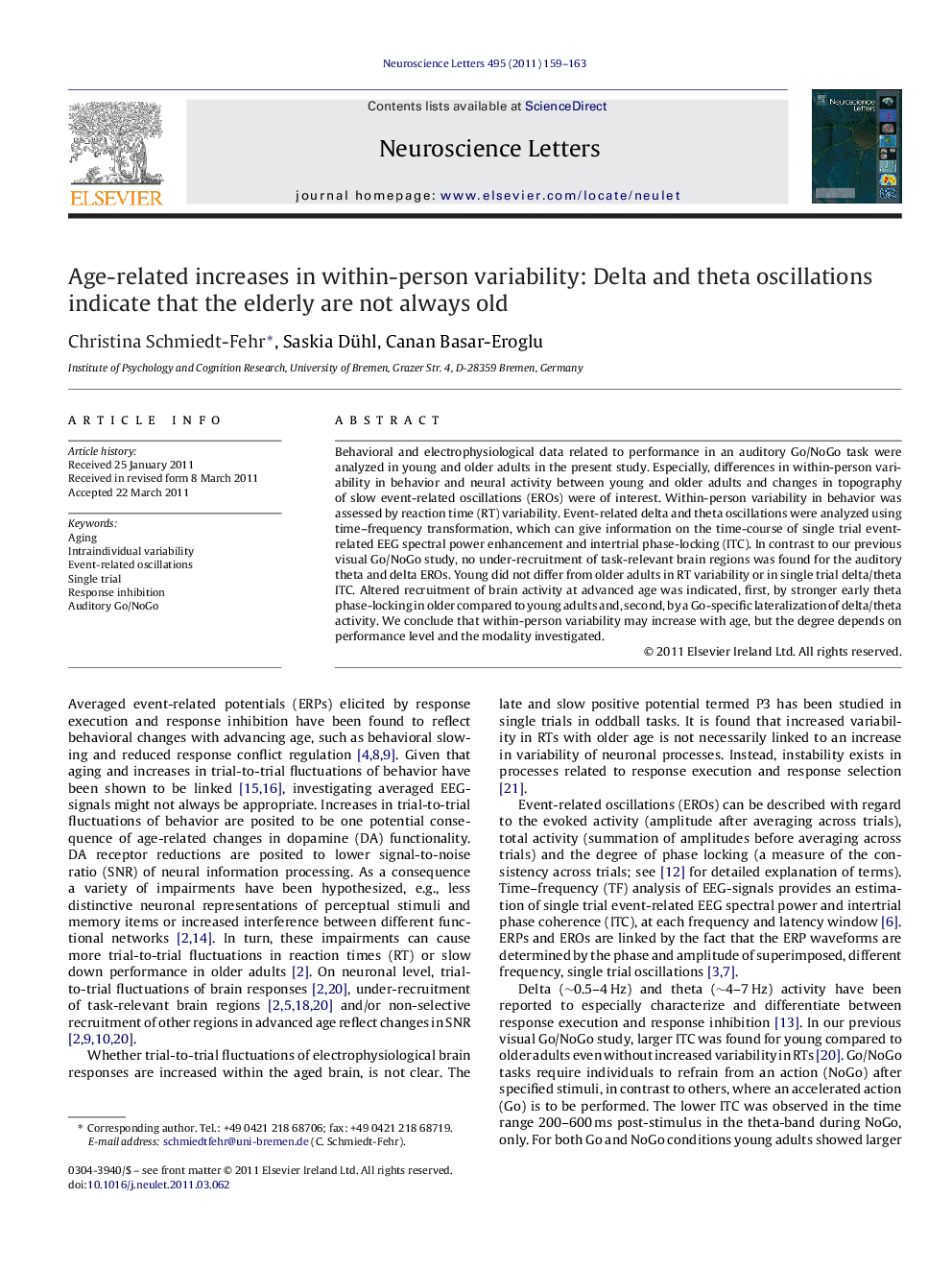| Article ID | Journal | Published Year | Pages | File Type |
|---|---|---|---|---|
| 4345260 | Neuroscience Letters | 2011 | 5 Pages |
Behavioral and electrophysiological data related to performance in an auditory Go/NoGo task were analyzed in young and older adults in the present study. Especially, differences in within-person variability in behavior and neural activity between young and older adults and changes in topography of slow event-related oscillations (EROs) were of interest. Within-person variability in behavior was assessed by reaction time (RT) variability. Event-related delta and theta oscillations were analyzed using time–frequency transformation, which can give information on the time-course of single trial event-related EEG spectral power enhancement and intertrial phase-locking (ITC). In contrast to our previous visual Go/NoGo study, no under-recruitment of task-relevant brain regions was found for the auditory theta and delta EROs. Young did not differ from older adults in RT variability or in single trial delta/theta ITC. Altered recruitment of brain activity at advanced age was indicated, first, by stronger early theta phase-locking in older compared to young adults and, second, by a Go-specific lateralization of delta/theta activity. We conclude that within-person variability may increase with age, but the degree depends on performance level and the modality investigated.
► Visual Go/NoGo ERO study implies increases in neural within-person variability. ► Auditory Go/NoGo ERO study does not indicate larger neural within-person variability. ► Within-person variability is influenced by performance level and modality investigated.
